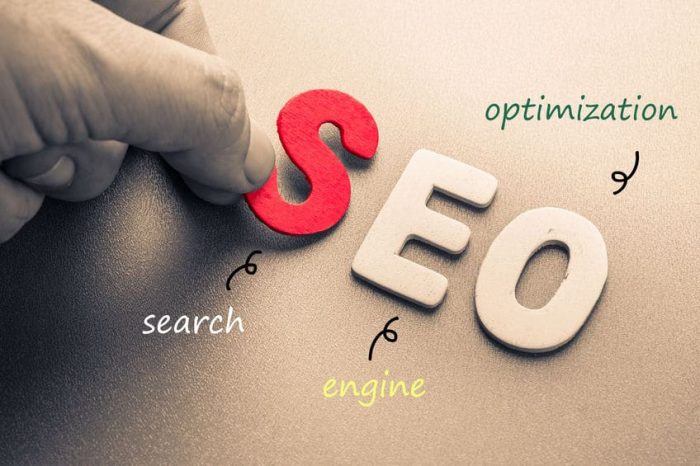While there are many kinds of web design mistakes, a few of the most grievous ones can actually hurt your site’s ranking when people search for keywords you’re aiming for.
Web Design Mistakes Hurting Your SEO
Take a look at these ten big missteps and ask yourself if any of them apply to your site. Chances are that just a few minutes of code revisions can make a big difference in your SEO.
1. Not Linking to an About Us Page
When Google’s crawlers follow links, they look for several generic terms that help them aggregate content. At the top of every page, include a pertinent headline and links to an About Us and Contact page. This will help Google crawl through your pages and find the content its bots need to parse everything else that’s on your site.
While including other href links is of course important, Google’s algorithm may not follow these with the same gusto that it does when looking for basic pages.
Web developers have hotly debated the right way to format hyperlinks, but it doesn’t seem to matter as much as it used to. Google is more interested in the name than the href formatting code.
2. Neglecting to Purge Old WordPress Plugins
Google, Bing and Yandex all rate sites down if they take too long to resolve in a virtual machine they use to test sites. If your landing page doesn’t meet basic web page speed requirements, then it’s a fair bet that it will start to slip in the rankings. WordPress is supposed to be lightweight, but even sysadmins who rely on this platform might find that it takes more than 500ms to load a page with good hardware.
One of the biggest reasons this common website design mistake occurs is either an over-reliance on plugins or neglecting to get rid of old ones that are no longer used. Head over to the WordPress admin panel and ask yourself if you really need all the ones listed.
If you see any names that you didn’t install yourself, then you want to purge these as well unless they were part of a dependency package.
This same wisdom applies to those who manage their back-end development with a framework like Rails or Node.js because plugins in these environments can be just as deleterious to performance.
3. Encouraging Redirects
People used to say that encouraging an end user’s browser to redirect them to another page was a good way to update links, but it’s very easy to get carried away with this practice. It’s a common web design mistake to encourage browser redirection. However, try to do your best to limit the number of times this happens when loading a page. Search engine bots can get stuck in a loop if they’re not able to keep track of the number of redirections.
4. Hosting Bloated Image Files
Compressed image file formats exist for a reason. Huge uncompressed TIFF pictures look gorgeous, but they take forever to load. Since TIFF and other related file structures normally require a helper application to resolve in a user’s browser, Google treats these as third-party downloads anyway.
Compress pictures and PDF files to reduce loading times and therefore improve search results. You can use lossless compression algorithms, like those employed by some versions of WebP, if you need to ensure unfettered data integrity. Now, there is certainty that around 9 out of 10 client browsers can load these pictures, so you’re not sacrificing usability.
5. Deleting Your Sitemap
People don’t talk about sitemaps nearly as much today as they used to. So, though you might feel like deleting that little XML chart that seems pointless, that’s a huge mistake. This is because a sitemap can add links that major search engines will follow without considering them spam. Since developers essentially write sitemaps in discrete HTML or XML, they can also be important for accessibility reasons. Google sometimes considers these in the rankings of sites for those who perform certain types of public services.
6. Relying Solely on Dynamic HTML Pages
Considering that we generate so much content on the fly, it can be tempting to make almost every page dynamic. This is how web giants like YouTube essentially work, so it can seem a little unfair that this hurts web rankings. However, most people aren’t running something the size of YouTube, so it’s important to make sure that at least your major landing pages are all rendered in basic HTML and CSS.
7. Generating URLs Dynamically
While there is a place for dynamic URL generation, a majority of your pages shouldn’t rely on it. Give your pages discrete names that make sense if at all possible. Most of the popular frameworks do allow this, so there’s no real reason not to.
8. Designing Exclusively for Desktop Devices
Desktop sites take a long time to load on mobile devices, so they’re inconvenient for mobile users. Search engines take mobile performance into consideration when ranking sites. Even if you do get to rank, then the probability of a bounce grows by 123 percent if it takes between 1-10 seconds to resolve a page. Use a mobile processing tool and physical hardware to check how your site loads on mobile devices.
9. Designing Exclusively for Mobile Devices
The flip side of this is true, since mobile pages don’t rank well when people search for keywords from a desktop or laptop computer.
Responsive web design that senses the type of device being used and the overall resolution of the user’s screen is of vital importance, especially for those attempting to launch multi-channel campaigns that are geared toward users of several different platforms.
10. Having No Way to Resolve 404 Errors
Search engines hopefully shouldn’t run into a resource not found error, but if they do, you need some way to point them back to your site. Make sure that you provide at least something creative that provides links to your homepage and other important areas.
Eventually, external links might fail and search engines following these could end up running into your site’s 404 page. If you took the time to link back to your homepage, then search engines will be able to discover something meaningful even from this failure condition. On top of that, there’s a good chance that a user following one of these malformed external links will click one of your other ones and provide your site with some additional traffic.
Avoiding each website design mistake listed above can make a noticeable difference in how search engines and every website visitor interact with your site. From responsive design to sitemap hygiene, fixing even one common mistake can boost your rankings and your user experience.





